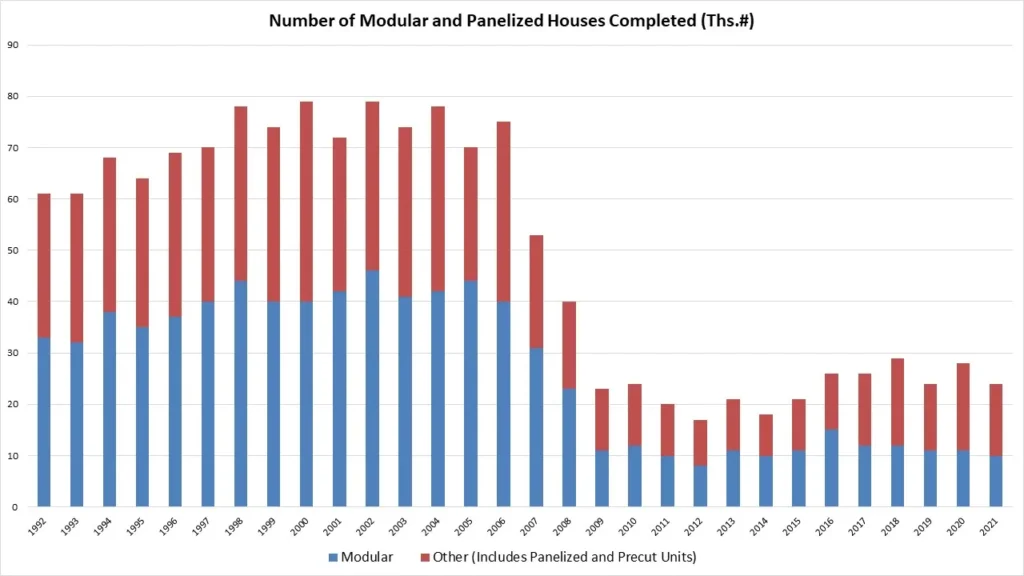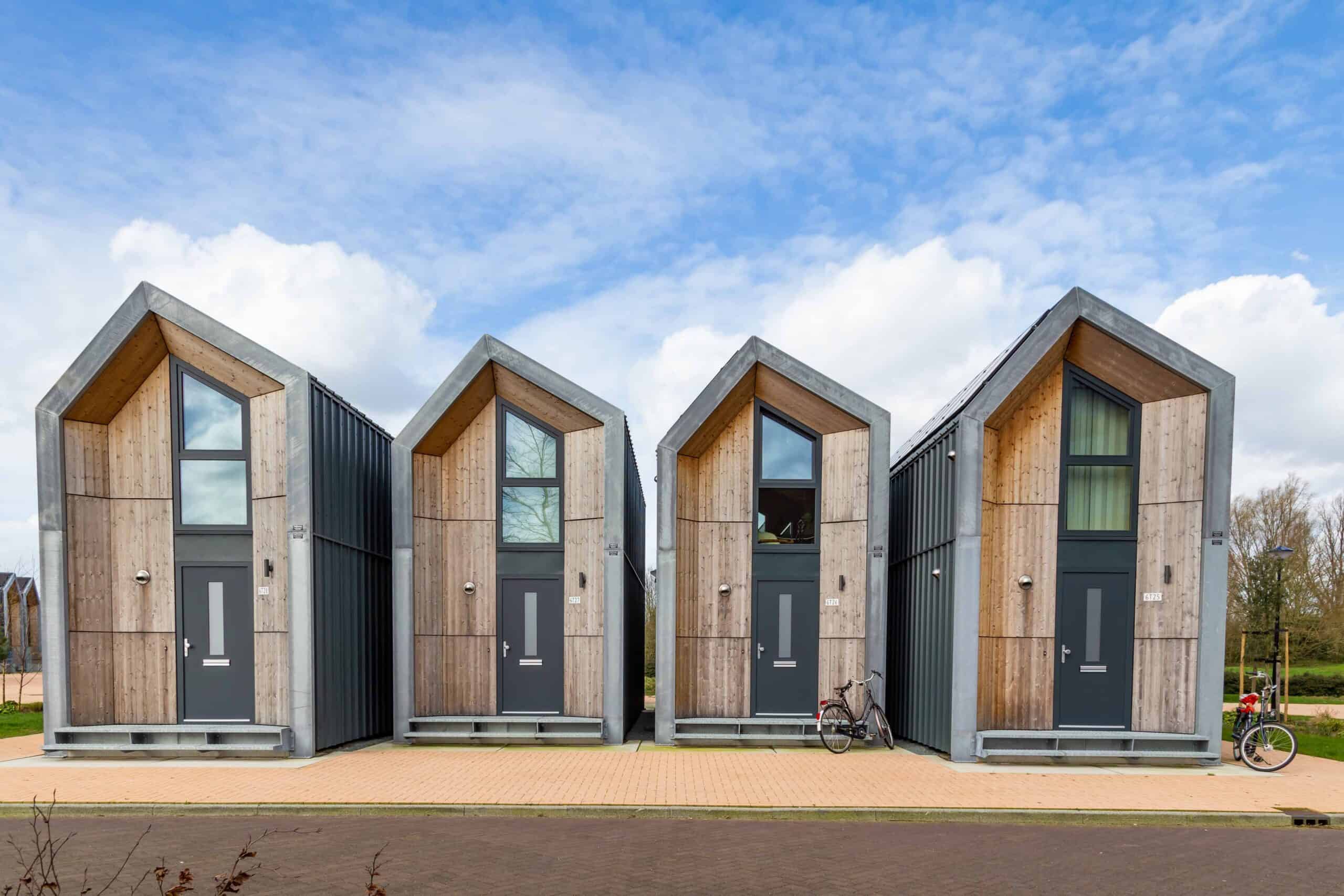There are at least 800,000 modular homes in the U.S. today, though this number is expected to be much higher. The exact number of standing modular homes is unknown because, even though some statistics show the total amount of housing units available in the U.S. today, they don’t specify how many of these houses were built using modular construction. Modular homes can only be identified with an in-depth analysis; without this information, the distinction between modular and other construction methods becomes complicated.
Reasons why modular homes can’t be told apart:
- They look just like a traditionally-built house
- They are built under the same regulations as any permanent construction
- They are considered real estate property
The number of modular homes being built in the U.S.
The National Association of Home Builders (NAHB) records the number of modular homes built every year in the U.S. since 1992, with a value of 800,000 since then [1]. This value is close to reality, though it isn’t exact since the only data included in the NAHB studies is that coming from their members, who only represent 80% of the houses being built in the US each year [2].

Why can’t we know the exact number of modular homes?
We know that there are 142 million houses in the U.S. at the moment [3]. However, we cannot tell how many of them were built using modular construction. While modular homes are built following a unique building process, their similarities with traditionally built houses are notorious.
Modular homes look just like a traditionally-built house
There are no design clues indicating that a house is modular; it is challenging to tell a modular home apart from a traditionally built house once its construction has finished. Once assembled on the property, there are no apparent signs of the prefabrication process. Modular homes are built in various sizes, shapes, and designs. Pretty much any house style can be built using modular construction.
Modular homes are built under the same regulations as any permanent construction
Modular homes must follow the same building codes as any other permanent construction. As a result, these constructions’ quality and safety standards are equivalent to a traditionally built house. Therefore, there is no need to disclose that the house has been built following a different construction process.
Modular homes are considered real estate property
Once the construction of the modular home is completed, and the house is ready to be lived in, the house receives the title of real estate property. This is precisely the same title a traditionally-built house or a permanent prefab receives. Therefore, despite the differences in the construction process, a modular home is classified in the exact same group as a permanent construction, giving no clue on their distinction.
References
- Nanayakkara-Skillington, D. (2022, September 8) Modular and Other Non-Site Built housing in 2021 National Association of Home Builders (NAHB) https://eyeonhousing.org/2022/09/modular-and-other-non-site-built-housing-in-2021/
- About NAHB National Association of Home Builders (NAHB) https://eyeonhousing.org/about-nahb/
- Statista Research Department (2022, July 27) Number of housing units in the United States from 1975 to 2021 (in millions) Statista https://www.statista.com/statistics/240267/number-of-housing-units-in-the-united-states/
Fig. 1. Nanayakkara-Skillington, D. (2022, September 8) Modular and Other Non-Site Built housing in 2021 National Association of Home Builders (NAHB) https://eyeonhousing.org/2022/09/modular-and-other-non-site-built-housing-in-2021




